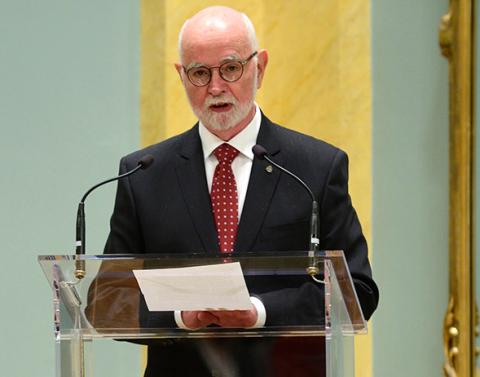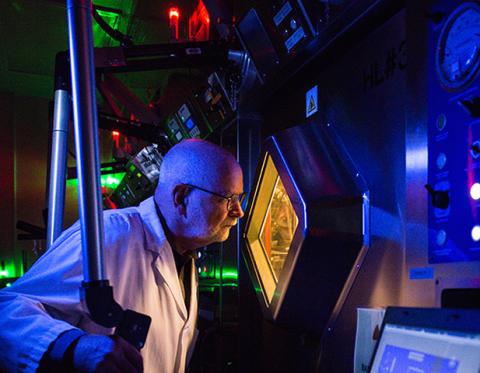

The United States is turning to field experts to help build a sustainable national isotope strategy. Emeritus senior scientist at TRIUMF and internationally recognized expert on medical isotopes, Dr. Tom Ruth has been appointed to serve as Vice-Chair of the Committee on the State of Molybdenum-99 Production and Utilization and Progress toward Eliminating Use of Highly Enriched Uranium (HEU).
The National Academy of Sciences is a private, nonprofit organization comprising of the nation’s leading scientists and advises the US government on scientific matters. The Committee, run by the Division on Earth and Life Studies, has a mandate of producing an independent, peer-reviewed consensus report on the state of Molybdenum-99 (Mo-99) production, which will be used by government officials and decision makers.
“The US Congress requested this study as part of its continuing efforts to assess progress in eliminating civilian use of HEU and to encourage the development of domestic supplies of medical isotopes, particularly, Mo-99. This NAS study will provide an independent assessment to inform possible future congressional actions,” says study Director Dr. Kevin Crowley.
Committee Chair and Harvard Professor Dr. James Adelstein explains that the committee’s mandate is to address how the supply of medical isotope Mo-99 will be maintained for the future and how Mo-99 can be produced without HEU, given the latter’s potential use in nuclear weapons.
“In his work with the committee as Vice-Chair,” Dr. Adelstein says, “Tom Ruth brings his impressive knowledge and experience of radionuclide production and radiopharmaceutical chemistry to these significant issues. It will be my pleasure and privilege to work together again with him.”
Dr. Ruth brings decades of experience in nuclear medicine at TRIUMF, UBC, and the BC Cancer Agency, and vast expertise in cyclotron production of radioisotopes including Technetium-99m (Tc-99m) to the US National Academies committee. He has collaborated with international experts throughout his career, serving on various committees and bringing his knowledge of radioisotopes across the globe.
Dr. Ruth joins the committee just shortly after his Canadian nuclear medicine team, CycloMed99, made a new breakthrough in Tc-99m production. Tc-99m is a key isotope used worldwide for detection and diagnosis of cardiac disease and cancer. The majority of Tc-99m is sourced via the decay of Mo-99 after it is created in a nuclear reactor using HEU. The team demonstrated large-scale production of Tc-99m by irradiating another molybdenum isotope, Mo-100, using a cyclotron. This was a key step towards eliminating the use of reactors and HEU in medical isotope production.
“Over the next few years we will see the supply of Mo-99/Tc-99m in flux as various alternative modes of production become available. Which mix of processes will be viable will depend upon the economics of supply. Trying to assist in the rollout of a secure global supply is an important endeavor for me regardless of how small a role it may be,” says Dr. Ruth.
Dr. Ruth is excited to share the advancements made by CycloMed99 with US experts and to collaborate on an international stage in finding a global medical isotope solution that eliminates the need for HEU. Congratulations, Dr. Ruth!
Dr. Ruth’s other appointments:
- He is the Canadian representative member of the UN International Atomic Energy Agency’s Standing Advisory Group for Nuclear Applications, where he advises on the production and application of radiopharmaceuticals.
- He serves on the Nuclear Science Advisory’s Committee’s (NSAC) Subcommittee on Isotopes for the Nuclear Physics Program of the US Department of Energy.
- He serves on the NSCA Subcommittee reviewing the National Nuclear Security Administration’s program at creating a domestic (US) supply of Mo-99 without the use of HEU.
By Jacqueline Wightman, Communications Assistant
Top Photo: Dr. Tom Ruth giving Brockhouse Award accepance speech on behalf of the CycloMed99 team at the NSERC Award Ceremony in Ottawa - Credit Sgt Ronald Duchesne, 2015. Bottom Photo: Dr. Tom Ruth in an isotope lab at the BC Cancer Agency - Credit NSERC 2015.
